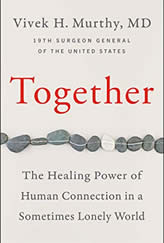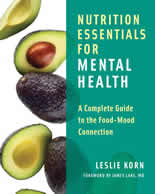Rewiring the Addicted Brain with EMDR- Based Treatment
Rewiring the Addicted Brain with EMDR- Based Treatment is a handbook written for “therapists, substance use counselors, and lay people seeking user-friendly tools to help support themselves in recovery” (pg. x). Parnell offers a descriptive introduction that informs the reader what to expect from the book, how it is organized and a brief summary of each part of the book. One of the unique aspects of the book is that it does not need to be read in order. The author instead suggests finding the chapter that would be most beneficial to the client depending on what they are currently struggling with and equip them with the necessary tools found in that chapter. It is important to note that the author explicitly cautions that EMDR therapy can and should only be practiced by licensed mental health counselors or clinicians who have been trained in this modality. In addition to her attachment focus EMDR approach, Parnell also includes aspects from an EMDR-based technique called Resource Tapping. Tapping in are exercises based on the Resource Tapping technique that non-EMDR therapists and lay people can put into use.
Writing on the Moon
The title alone prompted my email to Karnac for a reviewer’s copy of Bonnie Zindel’s newest book. Reading the forward cinched it. Bonnie’s skillful use of figurative language was a bit intimidating, okay totally intimidating. How dare I consider writing a review that wouldn’t fall flat, sound dimwitted and dull when juxtaposed to her masterful use of sound, sight, and syllabication. Bonnie’s taken poetic play to heart; here, just read this sentence aloud and you’ll hear what I mean: “thunderbolts strike, flying shadows lurk, golden arrows soar . . .” (pg. xv). We’ve got jagged energy piercing, ghostly apparitions hovering, a savior coming to the rescue. I read the forward twice simply to appreciate the language.
Truly Mindful Coloring
I struggle to sit still (unless I’m sitting outside in nature, but I’m talking about everyday life here). Ask me to sit and be silent? Well my mental chatter loves to make me nuts. I focus on the breath. I focus on sensation. I focus on the fact that I am not focusing, with a touch of loving kindness and compassion. I am kind to myself no doubt there; I accept that my mind loves to whirl and twirl, to take facts and create stories, to take a fleeting image or sensation and create a long-winded tale. Even here, on the page, the words keep flowing when the point has most likely already been made. I’ve read countless books (reviewed many, done the practices). I’ve attended webinars and workshops and meditation groups, all with the same frustration. Silence while sitting escapes me. I thought I was hopeless until now.
The Elusive Obvious: The Convergence of Movement, Neuroplasticity & Health
Feldenkrais wrote The Elusive Obvious in his mid-70s, three years before his death, with the intention to offer a "coherent and comprehensive statement of his theoretical point of view" (xii). His writing style intrigued me, his conversational tone engaging. His conversations about words and movement, about science and acceptance, about learning and awareness pulled me deeper into his philosophical stance on health and healing. He offered that the content only provides information necessary to understand how his techniques work. He deliberately avoided discussing why. "In science," he wrote, "we really only know how" (pg.1).
Deep Play: Exploring the Use of Depth Psychotherapy with Children
Nancy Eichhorn, PhD, offers readers a personal and in-depth review of Deep Play: Exploring the Use of Depth Psychotherapy with Children. The chapters in this startling book highlight the power of presence in play, in imagination, and in relationship.
Anna Halprin: Dance, Process, Form
Anna Halprin: Dance, Process, Form details the life and work of dancer and artist Anna Halprin. Halprin was an early innovator in dance therapy, using the medium as a form of personal exploration through artistic and physical expression. Her work with groups of people, either for specific art pieces or in experimental workshops, was highly influential for the development of both dance therapy and avant-garde expressionism.
Forming your Aging: Porosity and Poetry, Essays in Formative Psychology
I’ve encountered Stanley Keleman’s work many times during my transition from teacher to therapist. And, I can honestly say I always walk away with a deeper sense of me in my entirety, me as embodied energy in human form, shaped as much by thought and reflection as act and reaction. An awareness lingers beyond the momentary meeting that tugs at the corners of my existence as if saying, come on, wake up now, be present in this body of yours and let it inform you just as you inform it.
Character Strengths Interventions: A Field Guide for Practitioners
Positive psychology is rooted in the idea that human beings want to thrive and engage in things that enrich their experiences and cultivate a meaningful life. In his 2014 book, Mindfulness and Character Strengths: A Practical Guide to Flourishing, author Ryan M. Niemiec discusses how practicing mindfulness can help individuals identify, understand, and apply their character strengths and create a pathway to a fulfilling life. He takes readers through Drs. Christopher Peterson and Martin Seligman’s program Mindfulness-Based Strengths Practice (MBSP), relays inspiring success stories about finding meaning via MBSP, provides useful handouts to guide readers through MBSP, and gives tips for practitioners such as how to apply MBSP to different settings and situations.
Mindfulness and Character Traits received praise for its revolutionary perspective. It reads like a self-help book, perfect for individuals who want to learn how to personally achieve mindfulness and discover their character strengths; however, it wasn’t written with the goal of teaching practitioners how to implement MBSP in their practice with their clients. With that in mind, Niemiec (2018) wrote his recently published book, Character Strength Interventions: A Field Guide for Practitioners for Practitioners. Additionally, he focuses more on the core of positive psychology, character strengths and less on how to achieve mindfulness. He educates the reader on the foundations of character strength interventions, relays evidence to support his claims about the usefulness of character strength interventions, and explains countless interventions step-by-step providing practitioners with a useful handbook.
Freedom from Trauma through Spirituality
Our Spring issue is pleased to have a personal and powerful article from Katja Rusanen, author, spiritual life coach, and inspirational speaker.
She shares her early experience with a lover's suicide and its impact on her life, then ties her personal journey into her professional approach to health and healing.
Hakomi Mindfulness-Centered Somatic Psychotherapy: A Comprehensive Guide to Theory and Practice
Perhaps it’s because the contributors and editors are all Hakomi specialists, perhaps it’s because they are not just practitioners of this methodology but have sincerely immersed themselves in Hakomi’s foundational precepts personally and professionally: mindfulness, presence, loving kindness, and nonviolence. I felt as if the material was written according to the core essence of Hakomi— “assisted self-study done in a state of mindfulness”.














